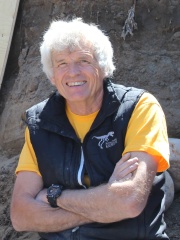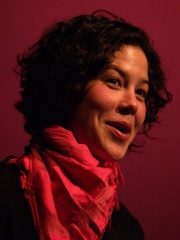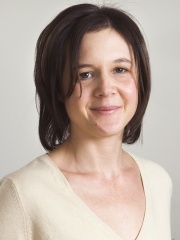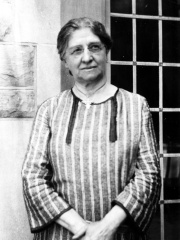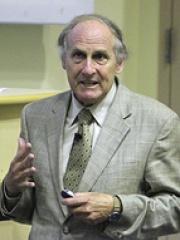
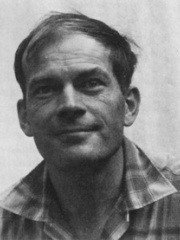
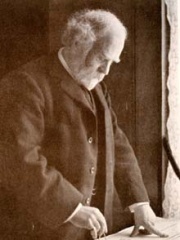
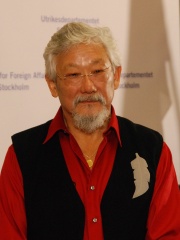
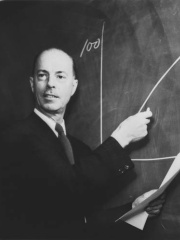

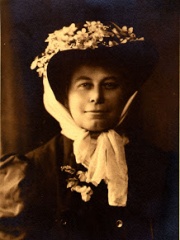

The Most Famous
BIOLOGISTS from Canada
This page contains a list of the greatest Canadian Biologists. The pantheon dataset contains 1,097 Biologists, 14 of which were born in Canada. This makes Canada the birth place of the 15th most number of Biologists behind Japan, and Denmark.
Top 10
The following people are considered by Pantheon to be the top 10 most legendary Canadian Biologists of all time. This list of famous Canadian Biologists is sorted by HPI (Historical Popularity Index), a metric that aggregates information on a biography's online popularity. Visit the rankings page to view the entire list of Canadian Biologists.

1. Ralph M. Steinman (1943 - 2011)
With an HPI of 71.77, Ralph M. Steinman is the most famous Canadian Biologist. His biography has been translated into 55 different languages on wikipedia.
Ralph Marvin Steinman (January 14, 1943 – September 30, 2011) was a Canadian physician and medical researcher at Rockefeller University, who in 1973 discovered and named dendritic cells while working as a postdoctoral fellow in the laboratory of Zanvil A. Cohn, also at Rockefeller University. Steinman was one of the recipients of the 2011 Nobel Prize in Physiology or Medicine.

2. Robert H. MacArthur (1930 - 1972)
With an HPI of 60.24, Robert H. MacArthur is the 2nd most famous Canadian Biologist. His biography has been translated into 17 different languages.
Robert Helmer MacArthur (April 7, 1930 – November 1, 1972) was a Canadian-born American ecologist who made a major impact on many areas of community and population ecology. He is considered to be one of the founders of ecology.

3. John Murray (1841 - 1914)
With an HPI of 58.96, John Murray is the 3rd most famous Canadian Biologist. His biography has been translated into 18 different languages.
Sir John Murray (3 March 1841 – 16 March 1914) was a pioneering Canadian-born British oceanographer, marine biologist and limnologist. He is considered to be the father of modern oceanography.

4. David Suzuki (b. 1936)
With an HPI of 56.67, David Suzuki is the 4th most famous Canadian Biologist. His biography has been translated into 39 different languages.
David Takayoshi Suzuki (born March 24, 1936) is a Canadian academic, science broadcaster, and environmental activist. Suzuki earned a PhD in zoology from the University of Chicago in 1961, and was a professor in the genetics department at the University of British Columbia from 1963 until his retirement in 2001. Since the mid-1970s, Suzuki has been known for his television and radio series, documentaries and books about nature and the environment. He is best known as host and narrator of the popular and long-running CBC Television science program The Nature of Things, seen in over 40 countries. He is also well known for criticizing governments for their lack of action to protect the environment. A longtime activist to reverse global climate change, Suzuki co-founded the David Suzuki Foundation in 1990, to work "to find ways for society to live in balance with the natural world that does sustain us." The Foundation's priorities are oceans and sustainable fishing, climate change and clean energy, sustainability, and Suzuki's Nature Challenge. The Foundation also works on ways to help protect the oceans from large oil spills such as the Deepwater Horizon oil spill. Suzuki also served as a director of the Canadian Civil Liberties Association from 1982 to 1987. Suzuki was awarded the Right Livelihood Award in 2009. His 2011 book The Legacy won the Nautilus Book Award. He is a Companion of the Order of Canada. In 2004, Suzuki ranked fifth on the list of final nominees in a CBC television series that asked viewers to select The Greatest Canadian of all time.
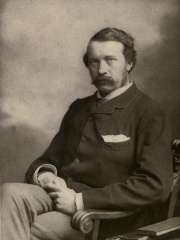
5. George Romanes (1848 - 1894)
With an HPI of 54.84, George Romanes is the 5th most famous Canadian Biologist. His biography has been translated into 16 different languages.
George John Romanes (20 May 1848 – 23 May 1894) was a Canadian-Scots evolutionary biologist and physiologist who laid the foundation of what he called comparative psychology, postulating a similarity of cognitive processes and mechanisms between humans and other animals. He was the youngest of Charles Darwin's academic friends, and his views on evolution are historically important. He popularized the term neo-Darwinism, which in the late 19th century was considered as a theory of evolution that focuses on natural selection as the main evolutionary force. Romanes' early death was a loss to the cause of evolutionary biology in Britain. Within six years Mendel's work was rediscovered, and a whole new agenda opened up for debate.

6. Colin Munro MacLeod (1909 - 1972)
With an HPI of 54.08, Colin Munro MacLeod is the 6th most famous Canadian Biologist. His biography has been translated into 15 different languages.
Colin Munro MacLeod (January 28, 1909 – February 11, 1972) was a Canadian-American geneticist. He was one of a trio of scientists who discovered that deoxyribonucleic acid, or DNA is responsible for the transformation of the physical characteristics of bacteria, which subsequently led to its identification as the molecule responsible for heredity.

7. William Diller Matthew (1871 - 1930)
With an HPI of 53.87, William Diller Matthew is the 7th most famous Canadian Biologist. His biography has been translated into 17 different languages.
William Diller Matthew FRS (February 19, 1871 – September 24, 1930) was a vertebrate paleontologist who worked primarily on mammal fossils, although he also published a few early papers on mineralogy, petrological geology, one on botany, one on trilobites, and he described Tetraceratops insignis, which was much later suggested to be the oldest known (Early Permian) therapsid. Matthew was born in Saint John, New Brunswick, the son of George Frederic Matthew and Katherine (Diller) Matthew. His father was an amateur geologist and paleontologist who instilled his son with an abiding interest in the earth sciences. Matthew received an A.B. at the University of New Brunswick in 1889 and then earned his Ph.D. at Columbia University in 1894. Matthew was curator of the American Museum of Natural History from the mid-1890s to 1927, and director of the University of California Museum of Paleontology from 1927 to 1930. He was an elected member of the American Philosophical Society. He was the father of Margaret Matthew Colbert, an artist, illustrator, and sculptor who specialized in visualizing extinct species.

8. Alice Eastwood (1859 - 1953)
With an HPI of 53.71, Alice Eastwood is the 8th most famous Canadian Biologist. Her biography has been translated into 19 different languages.
Alice Eastwood (January 19, 1859 – October 30, 1953) was a Canadian American botanist. She is credited with building the botanical collection at the California Academy of Sciences in San Francisco. She published over 310 scientific articles and authored 395 land plant species names, the fourth-highest number of such names authored by any female scientist. There are seventeen currently recognized species named for her, as well as the genera Eastwoodia and Aliciella.

9. Alice Wilson (1881 - 1964)
With an HPI of 52.39, Alice Wilson is the 9th most famous Canadian Biologist. Her biography has been translated into 18 different languages.
Alice Evelyn Wilson (August 26, 1881 – April 15, 1964) was Canada's first female geologist. She is most well known for her scientific studies of rocks and fossils in the Ottawa region between 1913 and 1963.
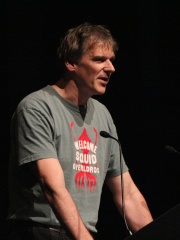
10. Peter Watts (b. 1958)
With an HPI of 50.69, Peter Watts is the 10th most famous Canadian Biologist. His biography has been translated into 17 different languages.
Peter Watts (born January 25, 1958) is a Canadian science fiction author. He specializes in hard science fiction. He earned a Ph.D. from the University of British Columbia in 1991 from the Department of Zoology and Resource Ecology. He went on to hold several academic research and teaching positions, and worked as a marine-mammal biologist. He began publishing fiction around the time he finished graduate school.
People
Pantheon has 14 people classified as Canadian biologists born between 1841 and 1979. Of these 14, 5 (35.71%) of them are still alive today. The most famous living Canadian biologists include David Suzuki, Peter Watts, and Philip J. Currie. The most famous deceased Canadian biologists include Ralph M. Steinman, Robert H. MacArthur, and John Murray.
Living Canadian Biologists
Go to all RankingsDavid Suzuki
1936 - Present
HPI: 56.67
Peter Watts
1958 - Present
HPI: 50.69
Philip J. Currie
1949 - Present
HPI: 50.02
Severn Cullis-Suzuki
1979 - Present
HPI: 48.42
Cordelia Fine
1975 - Present
HPI: 37.31
Deceased Canadian Biologists
Go to all RankingsRalph M. Steinman
1943 - 2011
HPI: 71.77
Robert H. MacArthur
1930 - 1972
HPI: 60.24
John Murray
1841 - 1914
HPI: 58.96
George Romanes
1848 - 1894
HPI: 54.84
Colin Munro MacLeod
1909 - 1972
HPI: 54.08
William Diller Matthew
1871 - 1930
HPI: 53.87
Alice Eastwood
1859 - 1953
HPI: 53.71
Alice Wilson
1881 - 1964
HPI: 52.39
Carrie Derick
1862 - 1941
HPI: 49.99
Overlapping Lives
Which Biologists were alive at the same time? This visualization shows the lifespans of the 9 most globally memorable Biologists since 1700.

